
Ao Nang: The Coastal Gem of Krabi
Discover Ao Nang in Krabi, Thailand – a coastal paradise blending adventure, relaxation, and vibrant local culture, perfect for every type of traveler.
Nestled in the province of Krabi, Ao Nang is a vibrant coastal neighborhood that has something for everyone. Known for its stunning beaches, crystal-clear waters, and vibrant nightlife, Ao Nang is a paradise for both adventure seekers and those looking to unwind. The long stretch of sandy beach is perfect for sunbathing and offers a breathtaking view of the Andaman Sea, while the nearby cliffs and islands provide ample opportunities for rock climbing, snorkeling, and kayaking. The heart of Ao Nang is its bustling main street, lined with an array of restaurants, shops, and bars. Here, you can sample delicious Thai cuisine, shop for local souvenirs, or simply enjoy a cold drink while watching the world go by. The neighborhood is also a gateway to some of Krabi's most famous attractions, including Railay Beach and the Phi Phi Islands, making it an ideal base for exploring the region. Despite its popularity, Ao Nang has managed to retain a laid-back and welcoming atmosphere. Whether you're interested in exploring lush jungles, diving into underwater adventures, or simply relaxing by the sea, Ao Nang offers an unforgettable experience that captures the essence of Thailand's natural beauty and cultural richness.
Local tips in Ao Nang
- Visit early in the morning to avoid crowds at popular beaches and attractions.
- Take a longtail boat tour to explore nearby islands like Chicken Island and Poda Island.
- Don't miss the sunset at Ao Nang Beach; it's one of the most spectacular sights.
- Try the local street food at the night market for an authentic Thai culinary experience.
- Consider renting a scooter for a day to explore the neighboring areas at your own pace.
Ao Nang: The Coastal Gem of Krabi
Nestled in the province of Krabi, Ao Nang is a vibrant coastal neighborhood that has something for everyone. Known for its stunning beaches, crystal-clear waters, and vibrant nightlife, Ao Nang is a paradise for both adventure seekers and those looking to unwind. The long stretch of sandy beach is perfect for sunbathing and offers a breathtaking view of the Andaman Sea, while the nearby cliffs and islands provide ample opportunities for rock climbing, snorkeling, and kayaking. The heart of Ao Nang is its bustling main street, lined with an array of restaurants, shops, and bars. Here, you can sample delicious Thai cuisine, shop for local souvenirs, or simply enjoy a cold drink while watching the world go by. The neighborhood is also a gateway to some of Krabi's most famous attractions, including Railay Beach and the Phi Phi Islands, making it an ideal base for exploring the region. Despite its popularity, Ao Nang has managed to retain a laid-back and welcoming atmosphere. Whether you're interested in exploring lush jungles, diving into underwater adventures, or simply relaxing by the sea, Ao Nang offers an unforgettable experience that captures the essence of Thailand's natural beauty and cultural richness.
Iconic landmarks you can’t miss
Phra Nang Beach
Discover the enchanting Phra Nang Beach in Krabi, Thailand – a stunning public beach with turquoise waters and breathtaking limestone cliffs.
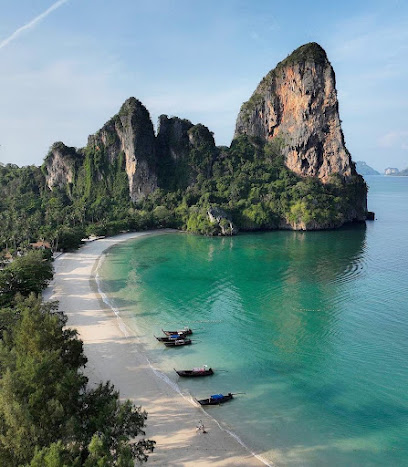
Monkey Trail, Ao Nang
Discover the stunning vistas and playful monkeys on Ao Nang's scenic Monkey Trail, a must-visit hiking destination in Krabi, Thailand.
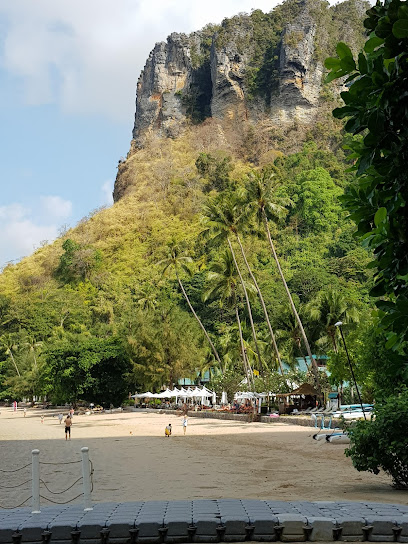
Ao Nang Elephant Sanctuary Krabi (Booking is needed)
Discover the Ao Nang Elephant Sanctuary, where ethical wildlife encounters meet stunning natural beauty in the heart of Krabi, Thailand.
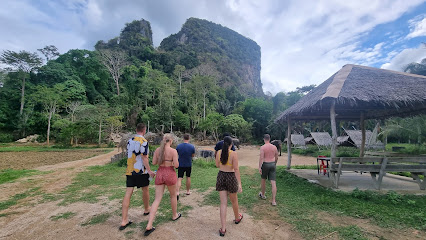
Diamond Cave / Phra Nang Nai Cave
Explore the stunning beauty of Diamond Cave and Phra Nang Nai Cave in Krabi, where nature's artistry comes to life in limestone formations.
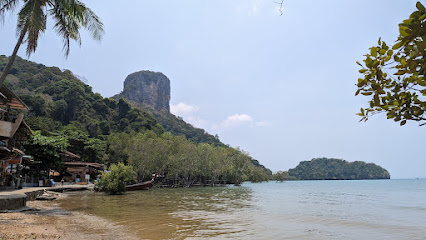
Bat Cave
Explore the mysterious Bat Cave in Ao Nang, Krabi - a natural marvel filled with stunning rock formations and vibrant wildlife.
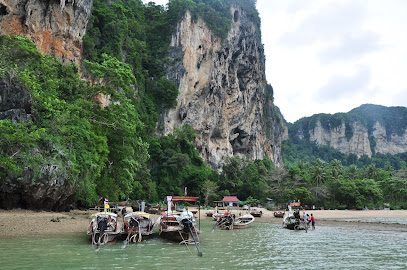
Ao Nang beach
Experience the stunning beauty of Ao Nang Beach with its golden sands, turquoise waters, and vibrant local culture in Krabi, Thailand.
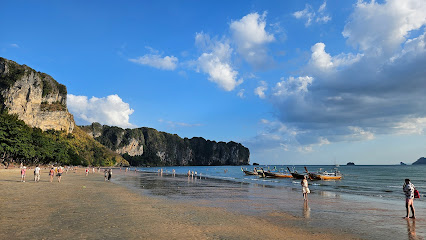
Sailfish Sculpture, Ao Nang Beach
Explore the Sailfish Sculpture at Ao Nang Beach, a stunning landmark that embodies the spirit of Thailand's coastal culture and breathtaking scenery.
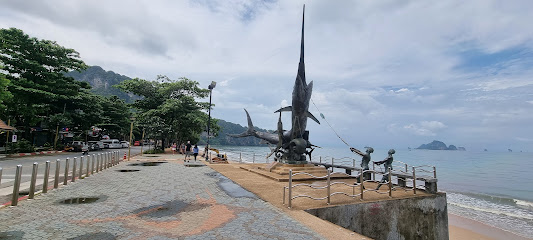
Ao Nang Landmark Bus Station
Discover the vibrant energy of Ao Nang Landmark Bus Station, your gateway to Krabi's beaches, food, and local culture.
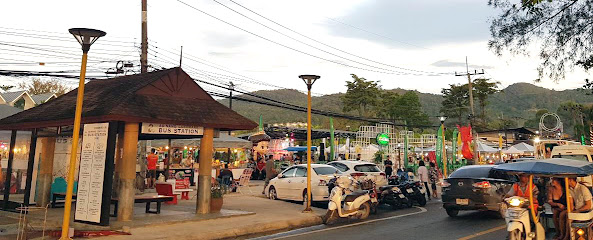
Ao Nang LandMark Beach
Experience the breathtaking beauty and vibrant culture at Ao Nang Landmark Beach, a must-visit destination in Krabi, Thailand.
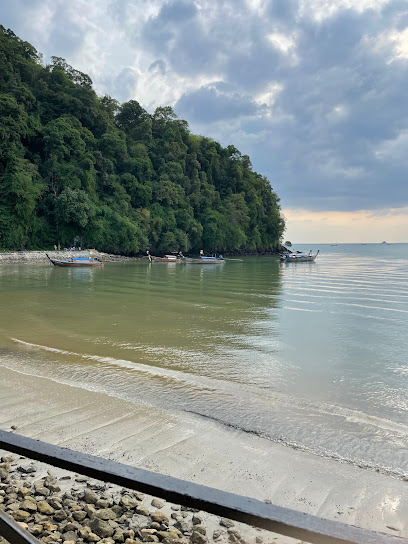
Dao art gallery
Explore the vibrant art scene at Dao Art Gallery in Ao Nang, showcasing local talent and unique souvenirs that capture the essence of Thailand.
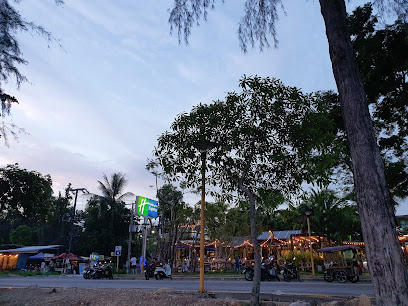
Unmissable attractions to see
Princess Cave (Railay, Krabi)
Experience the magical allure of Princess Cave in Railay, Krabi, where stunning cliffs meet rich cultural heritage and breathtaking views.
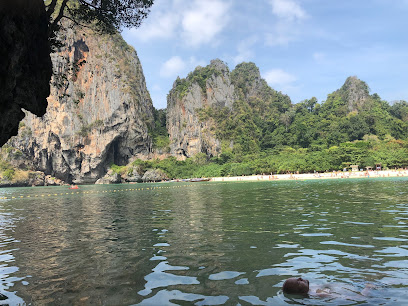
Thale Waek
Thale Waek: A breathtaking sandbar in Krabi, Thailand, offering stunning views, serene waters, and unforgettable adventures in nature.
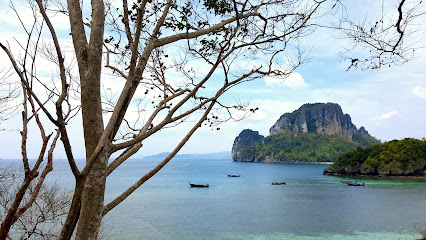
Monkey Trail, Ao Nang
Explore the breathtaking landscapes and playful wildlife along the scenic Monkey Trail in Ao Nang, a hiking haven for nature enthusiasts.
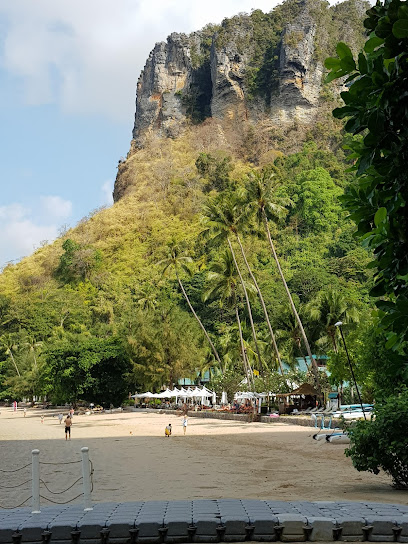
Krabi Elephant Shelter
Experience a unique connection with elephants while supporting their conservation at Krabi Elephant Shelter in Thailand's lush Ao Nang region.
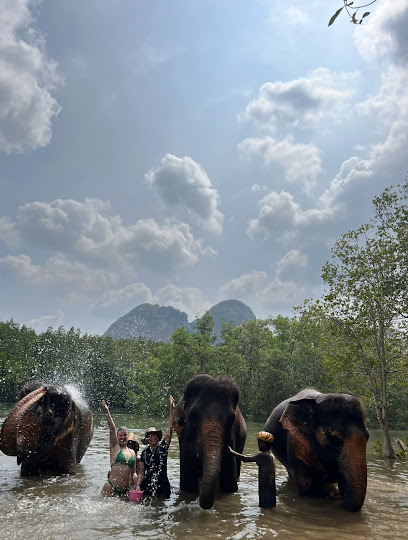
Ao Nang Elephant Sanctuary Krabi (Booking is needed)
Explore the enchanting Ao Nang Elephant Sanctuary in Krabi, a unique ethical haven for elephants and an unforgettable wildlife experience for visitors.
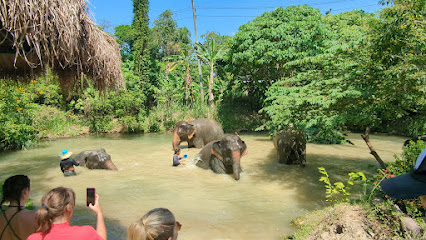
Diamond Cave / Phra Nang Nai Cave
Explore the stunning Diamond Cave and Phra Nang Nai Cave in Krabi, Thailand, and witness nature's breathtaking underground masterpieces.

Lagoon
Explore the Lagoon in Ao Nang, Krabi – a tropical paradise with stunning waters, limestone cliffs, and serene beauty, perfect for relaxation and adventure.
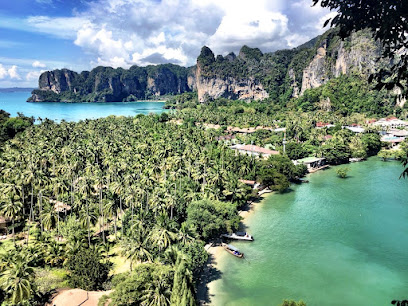
AONANG ELEPHANT PARK
Discover the beauty of elephant conservation at Aonang Elephant Park in Krabi, where adventure meets education.
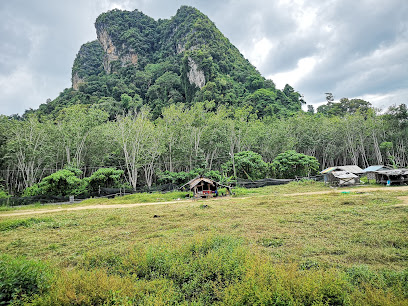
Bat Cave
Experience the breathtaking beauty of Bat Cave in Krabi, Thailand, where nature's artistry meets fascinating wildlife in a stunning limestone setting.
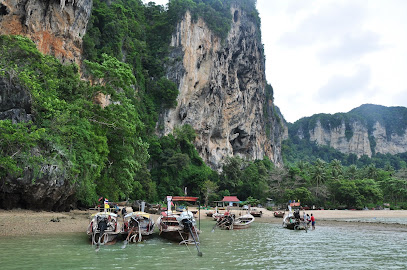
Tushi's Swing
Tushi's Swing in Ao Nang, Krabi offers an exhilarating adventure amidst breathtaking views, perfect for thrill-seekers and nature lovers alike.

Essential places to dine
TAJ PALACE RESTAURANT AONANG, KRABI
Experience an unforgettable culinary journey at Taj Palace Restaurant in Ao Nang with Indian, Italian & Thai delicacies that delight every palate.
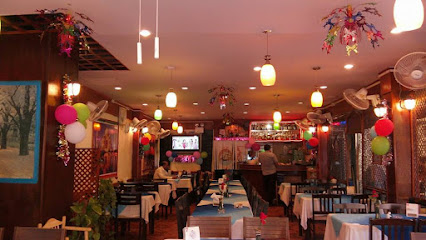
ร้านอาหารต้นมะยม อ่าวนาง Ton Ma Yom Thaifood Restaurant
Experience authentic Thai flavors in the heart of Ao Nang at Ton Ma Yom Restaurant – where every dish tells a story.
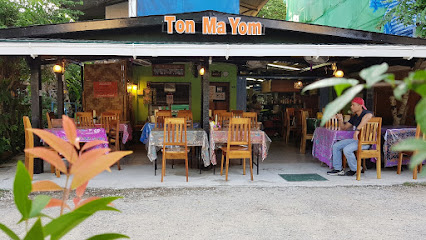
Carnivore Steak & Grill
Experience the finest steaks and Mediterranean cuisine at Carnivore Steak & Grill in Ao Nang, Krabi – where every meal is a celebration of flavors.
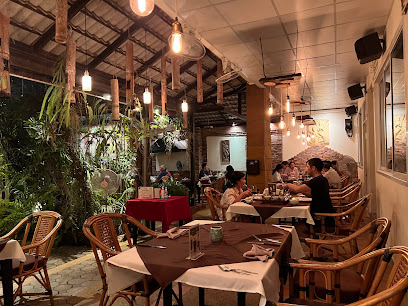
Bawarchi Delight Indian Restaurant
Discover authentic Indian flavors at Bawarchi Delight in Ao Nang – where every meal is a celebration of culinary tradition.
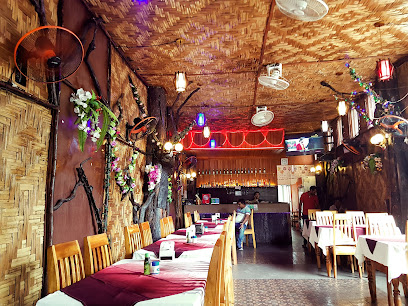
Mama Kitchen
Experience authentic Thai flavors at Mama Kitchen in Ao Nang - where delicious food meets friendly service in a vibrant atmosphere.
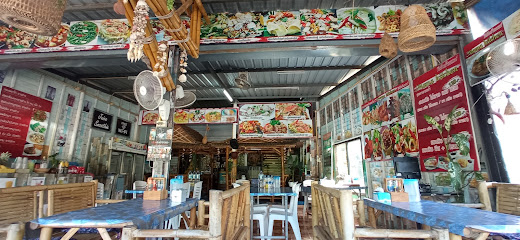
Aning Restaurant Ao Nang
Discover authentic Thai flavors at Aning Restaurant in Ao Nang—where every dish tells a story.
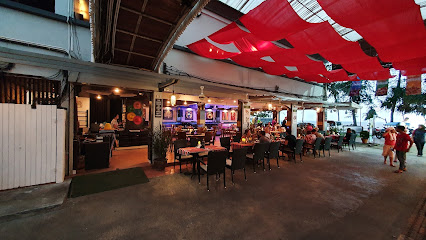
The Longtail Boat Italian ~ Thai Restaurant Ao Nang, Krabi
Discover a delightful fusion of Italian and Thai cuisine at The Longtail Boat Italian ~ Thai Restaurant in Ao Nang, Krabi.
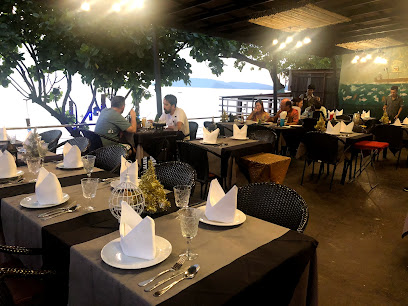
A-One Restaurant
Savor authentic Thai flavors alongside Western favorites at A-One Restaurant in Ao Nang – where culinary delight meets comfort.
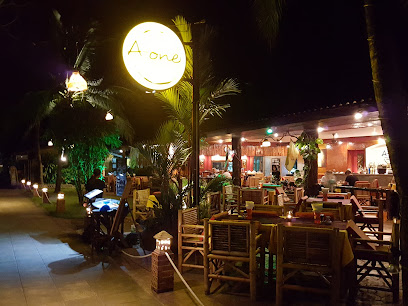
Sandee's Thai Restaurant ( ร้านอาหารแสนดี )
Experience authentic Thai flavors at Sandee's Restaurant in Ao Nang Beach—where every dish tells a story.
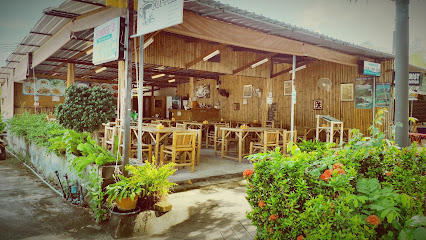
Rabiangsuan Restaurant
Experience authentic Thai cuisine at Rabiangsuan Restaurant in Ao Nang, Krabi – where every dish tells a story.
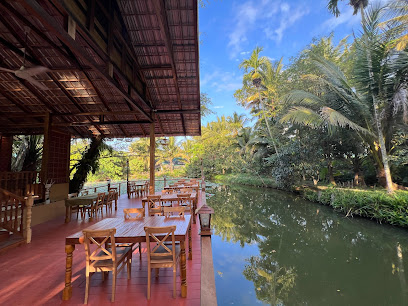
Markets, malls and hidden boutiques
Happy Cannabis
Explore the vibrant cannabis culture at Happy Cannabis in Ao Nang, Krabi, offering quality products and a welcoming atmosphere for all visitors.
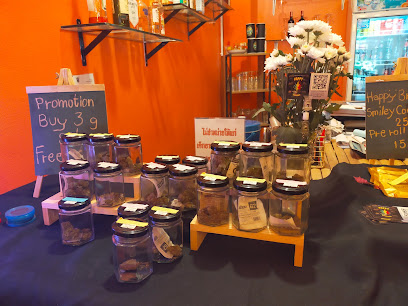
Armani Collection AO nang Center Point Ao nang Krabi 81180 Thailand
Explore the latest fashion trends at Armani Collection in Ao Nang, a stylish clothing store offering quality apparel and accessories.
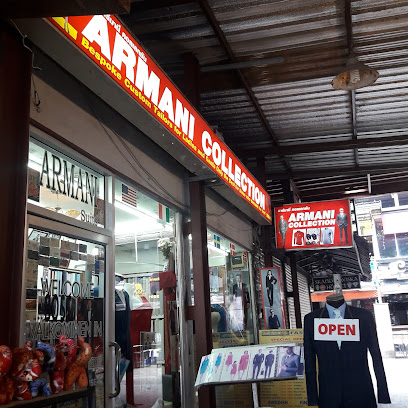
Ao Nang Night Plaza
Discover Ao Nang Night Plaza: A vibrant marketplace of beachwear, local crafts, and delicious street food in the heart of Krabi's nightlife.
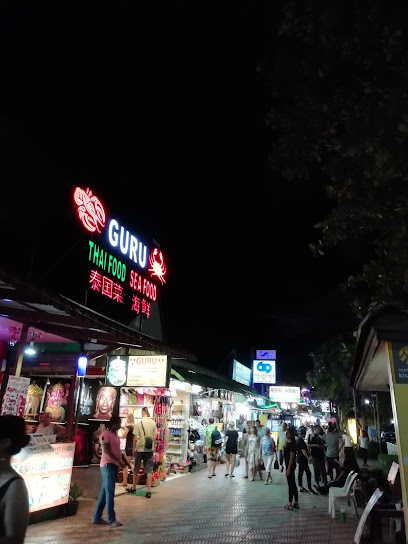
Tum's Souvenir Shop
Discover Tum's Souvenir Shop in Ao Nang for authentic Thai gifts and unique souvenirs that capture the spirit of your travels.
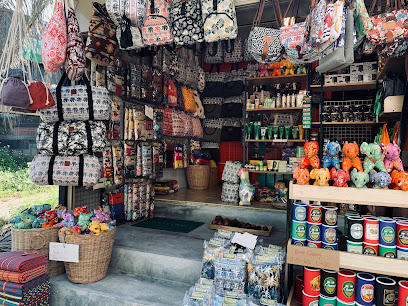
Bangkok Exotics
Discover Bangkok Exotics in Krabi for an immersive cannabis experience with quality products and expert guidance, perfect for tourists.
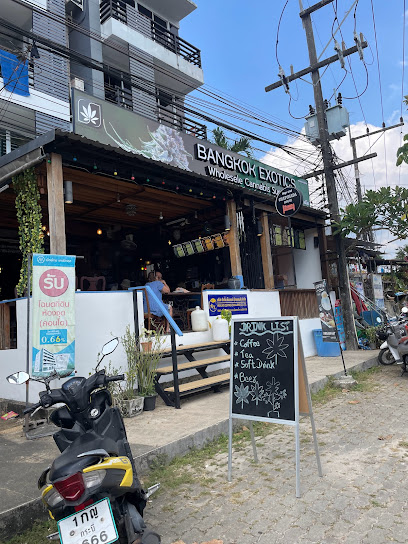
Walking street
Explore Ao Nang Walking Street: A vibrant shopping and dining destination in Krabi, perfect for a cultural experience and unique finds.
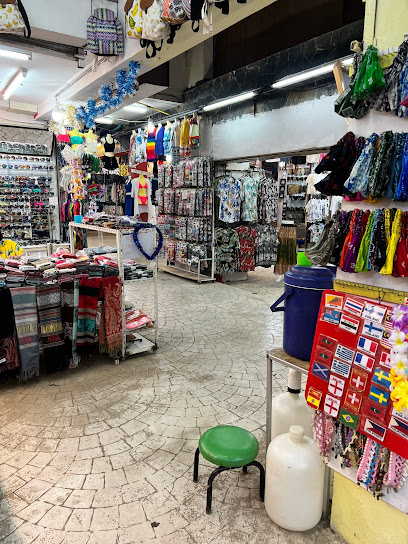
praew souvenir @tesco lotus Ao Nang
Discover authentic Thai souvenirs at Praew Souvenir in Tesco Lotus Ao Nang, where local culture meets convenience for every traveler.
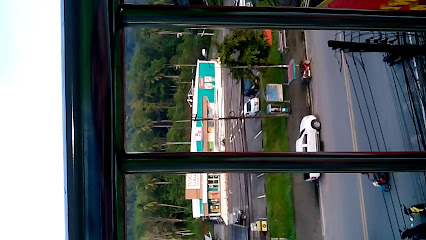
Anda Souvenir
Discover unique handcrafted treasures at Anda Souvenir in Ao Nang, Krabi, and take home a piece of Thailand's vibrant culture.
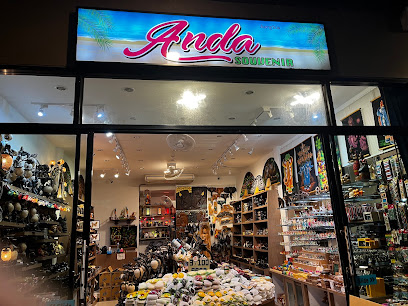
I'm Master Gift Shop and Laundry
Discover unique souvenirs and local crafts at I'm Master Gift Shop in Ao Nang, Krabi – a treasure trove for every traveler.
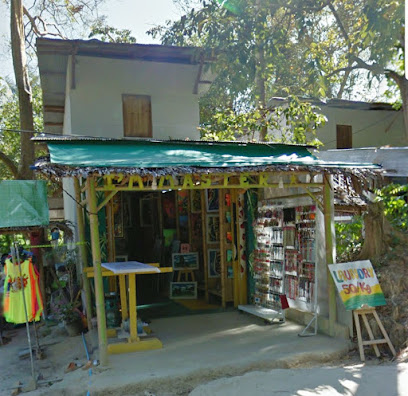
ช้างช็อป
Discover unique souvenirs at ช้างช็อป, your go-to destination in Ao Nang, Krabi for authentic Thai handcrafted treasures.
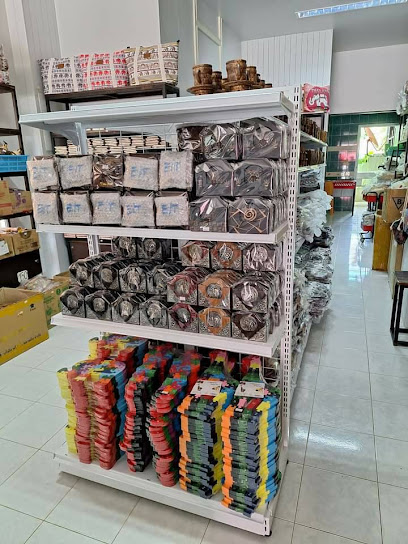
Essential bars & hidden hideouts
Boogie Bar
Experience the vibrant nightlife at Boogie Bar in Ao Nang, Krabi, where live music and refreshing drinks create unforgettable memories.
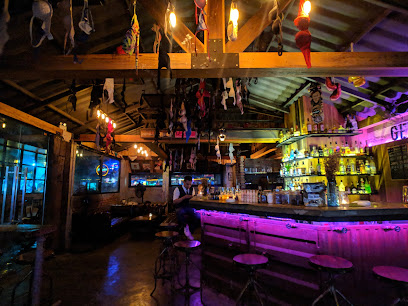
Reggae Town Bar and Restaurant
Experience the rhythm of Ao Nang at Reggae Town Bar, where delicious food, vibrant drinks, and reggae tunes create the perfect night out.
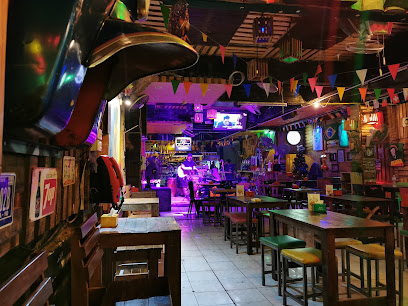
Tribe Beach Bar
Discover the lively atmosphere of Tribe Beach Bar in Ao Nang, Krabi, where tropical cocktails and vibrant nightlife await you.
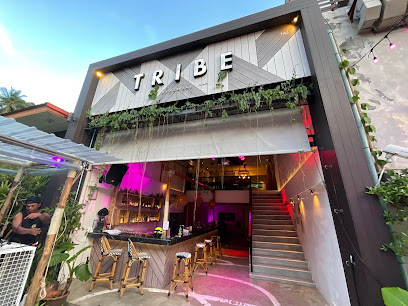
The Irish Embassy Pub, Restaurant and Sports bar, Ao nang
Experience the vibrant essence of Ao Nang at The Irish Embassy Pub, where delicious food meets live music and sports in a warm, welcoming atmosphere.
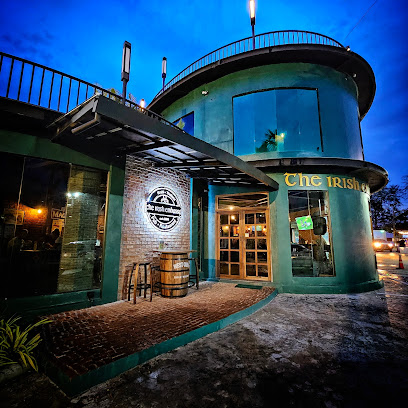
Mr Long Bar
Discover the vibrant nightlife of Ao Nang at Mr Long Bar, where refreshing drinks and a lively atmosphere await you.
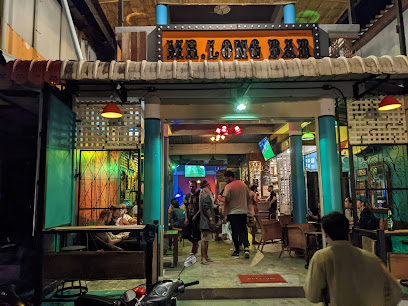
Beach Bar @ Aonang Villa Resort
Experience the ultimate beachside relaxation at the Beach Bar @ Aonang Villa Resort, where refreshing drinks meet stunning sea views in Krabi.
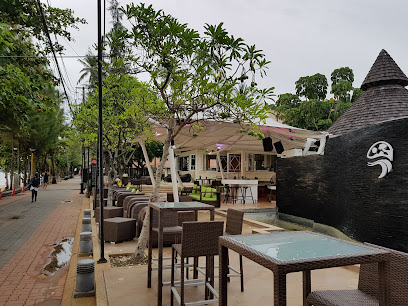
Kiss Bar Ao Nang
Kiss Bar Ao Nang: Your go-to destination for vibrant nightlife, refreshing cocktails, and an unforgettable social atmosphere in Krabi.
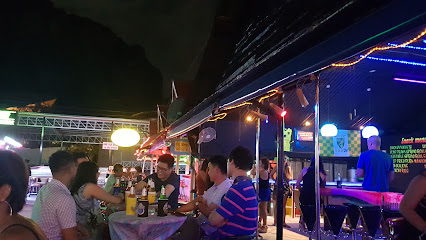
Jamaica bar
Discover the energetic Jamaica Bar in Ao Nang, Krabi – a lively destination for drinks, music, and unforgettable nights.
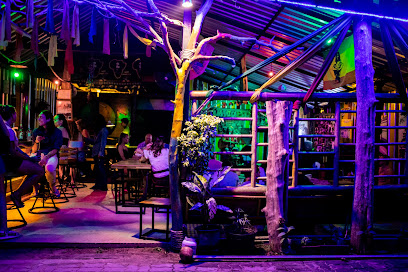
Up To You Bar
Experience the vibrant nightlife at Up To You Bar in Ao Nang, Krabi, where fun meets fantastic drinks in a lively atmosphere.
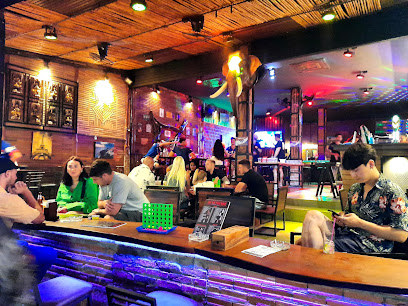
Your Bar
Experience the vibrant nightlife of Ao Nang at Your Bar, where exceptional drinks and a lively atmosphere await every visitor.
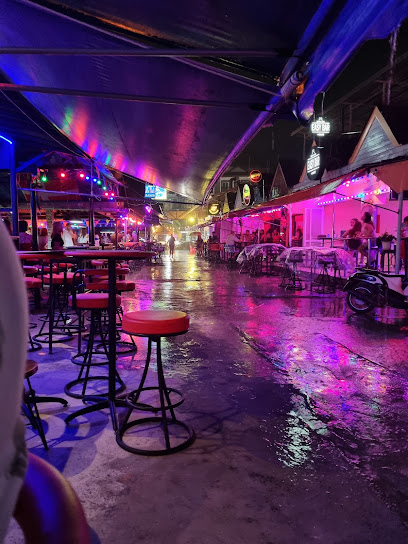
Local Phrases
-
- Helloสวัสดี
[sawasdee] - Goodbyeลาก่อน
[la kon] - Yesใช่
[chai] - Noไม่
[mai] - Please/You're welcomeโปรด/ยินดี
[proht/yindee] - Thank youขอบคุณ
[kop khun] - Excuse me/Sorryขอโทษ
[kor toht] - How are you?คุณสบายดีไหม
[kun sabai dee mai] - Fine. And you?สบายดี คุณล่ะ
[sabai dee kun la] - Do you speak English?คุณพูดภาษาอังกฤษได้ไหม
[kun poot pah saa angkrit dai mai] - I don't understandฉันไม่เข้าใจ
[chan mai kao jai]
- Helloสวัสดี
-
- I'd like to see the menu, pleaseขอดูเมนูหน่อย
[kor doo menu noi] - I don't eat meatฉันไม่กินเนื้อ
[chan mai gin neuua] - Cheers!ชนสุรา
[chon sura] - I would like to pay, pleaseฉันต้องการจ่ายเงิน
[chan tong gaan jai ngoen]
- I'd like to see the menu, pleaseขอดูเมนูหน่อย
-
- Help!ช่วยด้วย
[chuai duay] - Go away!ไปห่างๆ
[bpai yang yang] - Call the Police!โทรตำรวจ
[tor tamruat] - Call a doctor!โทรหมอ
[tor mor] - I'm lostฉันหลงทาง
[chan long tang] - I'm illฉันไม่สบาย
[chan mai sabai]
- Help!ช่วยด้วย
-
- I'd like to buy...ฉันต้องการซื้อ...
[chan tong gaan suu...] - I'm just lookingฉันแค่ชม
[chan kae chom] - How much is it?ราคาเท่าไหร่
[ra kaa tao rai] - That's too expensiveแพงเกินไป
[paeng gein pai] - Can you lower the price?ลดราคาได้ไหม
[lot ra kaa dai mai]
- I'd like to buy...ฉันต้องการซื้อ...
-
- What time is it?เวลาเท่าไหร่แล้ว
[welaa tao rai laew] - It's one o'clockเวลาหนึ่งโมง
[welaa neung mong] - Half past (10)เวลาสิบครึ่ง
[welaa sip khrung] - Morningเช้า
[chao] - Afternoonบ่าย
[bai] - Eveningเย็น
[yen] - Yesterdayเมื่อวาน
[meua waan] - Todayวันนี้
[wan nee] - Tomorrowพรุ่งนี้
[phrung nee] - 1หนึ่ง
[neung] - 2สอง
[song] - 3สาม
[sam] - 4สี่
[see] - 5ห้า
[ha] - 6หก
[hok] - 7เจ็ด
[jet] - 8แปด
[paet] - 9เก้า
[gao] - 10สิบ
[sip]
- What time is it?เวลาเท่าไหร่แล้ว
-
- Where's a/the...?...อยู่ที่ไหน
[... yu tee nai] - What's the address?ที่อยู่คืออะไร
[tee yu keu a rai] - Can you show me (on the map)?คุณแสดงให้ฉันดูได้ไหม
[kun sa daeng hai chan doo dai mai] - When's the next (bus)?รถคันถัดไปเมื่อไหร่
[rot kan tadt pai meua rai] - A ticket (to ....)ตั๋วไป...
[dtua pai...]
- Where's a/the...?...อยู่ที่ไหน
History of Ao Nang
-
The area now known as Ao Nang has a rich history dating back to the prehistoric period, with evidence of human settlements found in the nearby limestone caves, such as the Tham Sua and Tham Phi Hua To. These caves contain ancient rock paintings that suggest the presence of early hunter-gatherer communities. The region was likely inhabited by the Mon-Khmer ethnic groups, who were the first to cultivate rice and engage in trade along the coastal areas.
-
During the Ayutthaya Kingdom (1351-1767), Ao Nang became significant for maritime trade. Its strategic coastal location allowed for trading activities with neighboring regions, including Malaysia and Indonesia. The area served as a stopover point for merchants, contributing to the economic development of Krabi and establishing cultural connections with other Southeast Asian civilizations.
-
In the late 20th century, Ao Nang began to emerge as a popular tourist destination, particularly in the 1980s. The beautiful beaches, stunning limestone cliffs, and proximity to the Phi Phi Islands attracted both domestic and international travelers. The local government invested in infrastructure development, including roads and accommodations, which further enhanced Ao Nang's appeal as a vibrant tourist hotspot.
-
As tourism flourished, Ao Nang faced challenges in balancing development with the preservation of its cultural heritage. Efforts have been made to promote local traditions, such as traditional fishing practices and handicrafts, while also accommodating the influx of visitors. Cultural festivals and events have become integral to Ao Nang's identity, showcasing the region's rich history and diverse influences.
-
In recent years, Ao Nang has seen a shift towards sustainable tourism, with initiatives aimed at protecting its natural resources and promoting environmental awareness. Local organizations and community efforts focus on conservation of marine life and the preservation of the area's natural beauty, ensuring that future generations can enjoy the unique cultural and historical heritage of Ao Nang.
Ao Nang Essentials
-
Ao Nang is accessible from Krabi Town, which is about 20 kilometers away. You can take a taxi or a local songthaew (shared taxi) from Krabi Town to Ao Nang, with the journey taking approximately 30 minutes. From Krabi International Airport, taxis and shuttle services are available, taking around 25-30 minutes to reach Ao Nang. Additionally, there are ferries from nearby islands, such as Koh Phi Phi, that dock at Ao Nang's beach.
-
Ao Nang is a relatively compact area, making it easy to explore on foot. Local songthaews operate along the main road and are a convenient and inexpensive way to travel to nearby beaches like Nopparat Thara and Railay. Bicycle rentals are available at many shops, offering a fun way to explore the area. Motorbike rentals are also popular but should be approached with caution if you are not experienced.
-
Ao Nang is generally safe for tourists, but standard precautions should be taken. Avoid walking alone at night in poorly lit areas and keep personal belongings secure in crowded places. While there are no specific areas with high crime targeting tourists, petty theft can occur, particularly on the beach. Always remain vigilant and report any suspicious activity to local authorities.
-
In case of an emergency, dial 191 for police assistance or 1669 for medical emergencies in Thailand. The local hospital, Krabi Hospital, is equipped to handle various medical situations and is located a short drive away. It is advisable to have travel insurance that covers medical emergencies. For minor health issues, pharmacies are available throughout Ao Nang.
-
Fashion: Do wear lightweight and modest clothing, especially when visiting temples. Don't wear swimwear away from the beach. Religion: Do respect local customs, especially when visiting sacred sites. Always remove your shoes before entering temples. Public Transport: Do greet the driver when using songthaews. Don't engage in loud conversations. Greetings: Do use a respectful 'wai' (hands pressed together) when greeting locals. Eating & Drinking: Do try local street food and drink bottled water. Don't consume alcohol in public places during Buddhist holidays.
-
To experience Ao Nang like a local, visit the night markets to sample authentic Thai cuisine and shop for handmade crafts. Engage with local vendors and learn about their products. Explore less touristy beaches such as Klong Muang for a quieter experience. Consider joining a cooking class to learn how to prepare traditional Thai dishes. Always be polite and smile when interacting with locals, as friendliness is highly valued in Thai culture.
Nearby Cities to Ao Nang
-
Things To Do in Phuket
-
Things To Do in Trang
-
Things To Do in Nakhon Si Thammarat
-
Things To Do in Surat Thani
-
Things To Do in Koh Samui
-
Things To Do in Satun
-
Things To Do in Langkawi
-
Things To Do in Ranong
-
Things To Do in Chumphon
-
Things To Do in George Town
-
Things To Do in Penang
-
Things To Do in Kota Bharu
-
Things To Do in Ipoh
-
Things To Do in Cameron Highlands
-
Things To Do in Medan











